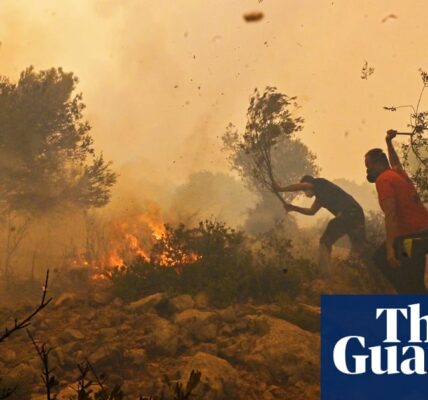A severe cold front from the Arctic is predicted to bring freezing temperatures to North America.

Forecasters have cautioned that a frigid blast of cold Arctic air, described as “bitter”, is expected to bring dangerously low temperatures to large areas of North America.
Environment Canada has released an extreme cold warning for the Canadian province of Alberta as frigid Arctic air moves from the Northwest Territories. The city of Calgary, Alberta’s largest city, is expected to experience temperatures as low as -34.6F (-37C) on Friday, with a daytime high of -23.8F (-31C). This would be the coldest day in January for the city in 20 years. Additionally, strong winds over the weekend could make it feel as cold as -58F (-50C). Experts warn that in these conditions, exposed skin can develop frostbite in less than a minute.
The National Weather Service reported that on Thursday night, a cold front will move from the Rockies towards the northern US plains, and then continue south. This is likely to result in multiple locations breaking their daily cold records. In Texas and the southeast, there are predictions of “dangerously cold wind chills” that will bring temperatures below freezing.
“According to a weather service alert, temperatures will be significantly harsher compared to the relatively mild conditions that have been present for most of the current winter season.”
The majority of the US is predicted to experience frigid temperatures, with Chicago set to drop below -10F (-23C) for the first time since 2019 and Oklahoma City below 0F (-17.7) for the first time since February 2021. Wind chill could potentially push temperatures in some areas of the Rocky Mountains to -30F (-34.4C), creating a dangerous risk of hypothermia for those caught in this weather.
At this time, significant snowstorms, freezing rain, and rainfall are predicted to impact the midwest and east coast. The weather service has issued a warning for potential major disruptions, with 12 inches of snow projected to accumulate in certain areas of Michigan. Additionally, strong winds may result in blizzard conditions in the Great Lakes area. Furthermore, the north-east region may experience flooding along rivers and coastlines due to storms and heavy precipitation.
The upcoming cold front will bring a noteworthy shift for areas of the country that have been experiencing an unusually mild winter with minimal snow and higher-than-average temperatures.
The National Oceanic and Atmospheric Administration confirmed on Tuesday that last year was the fifth warmest year on record in the United States. Globally, 2023 was by far the hottest year.
Climate researchers have theorized that sudden extreme blasts of cold weather in the US could, in some cases, be fueled by global heating. The Arctic is warming up four times faster than the rest of the planet, causing changes to the circular pattern of winds called the polar vortex, which usually keeps the cold massed upon the polar region.
As this pattern increases in waviness, frigid temperatures can move southward. This is the explanation believed by researchers for the fatal cold spell in Texas in 2021.
Source: theguardian.com


